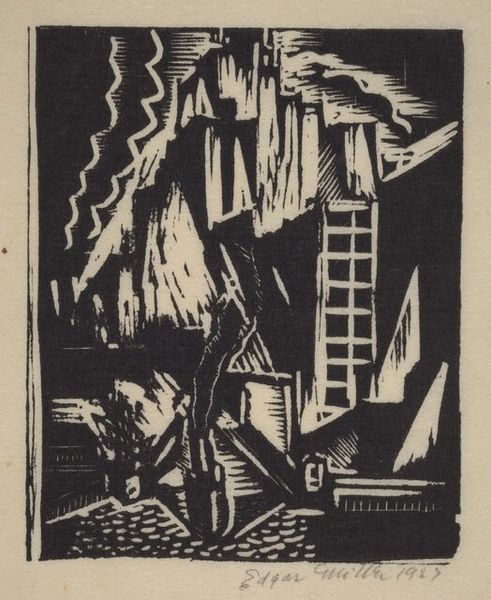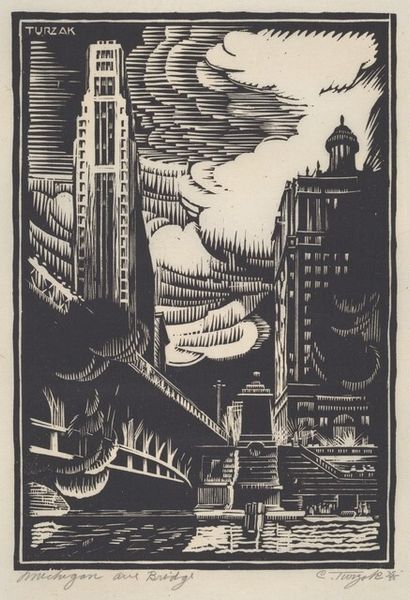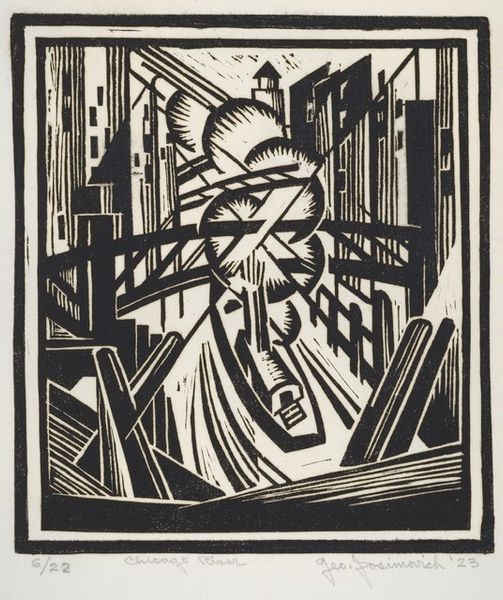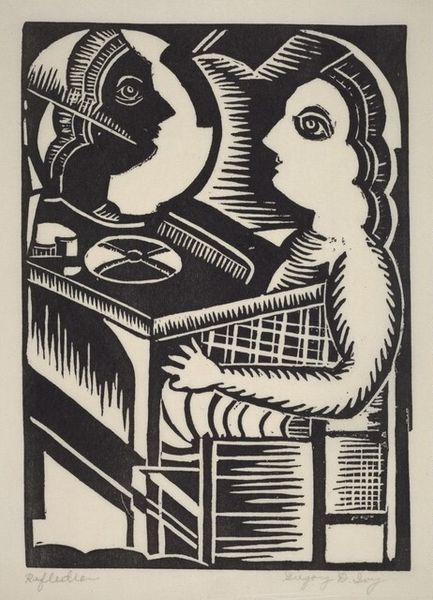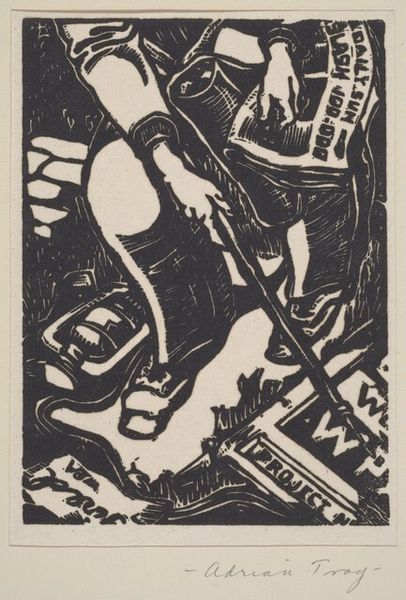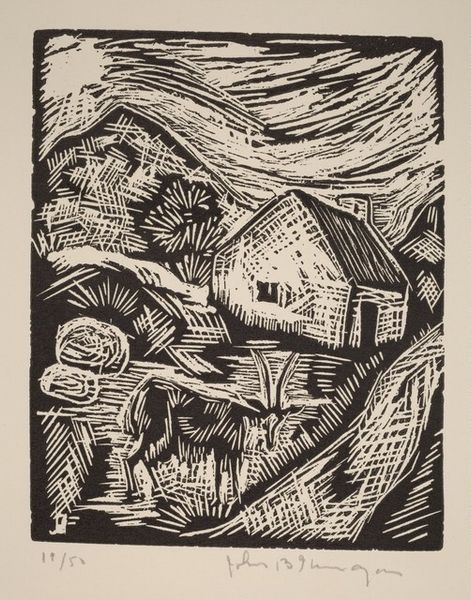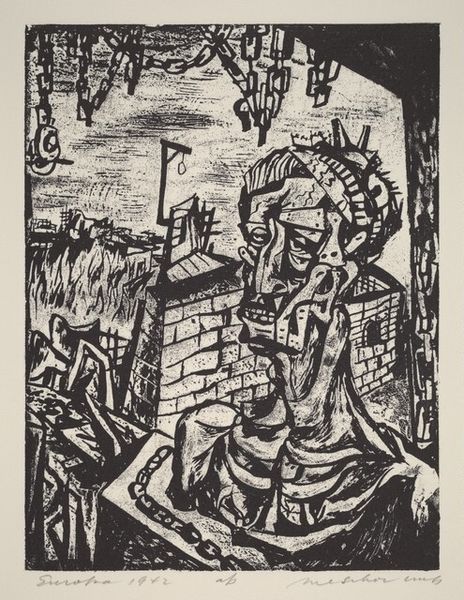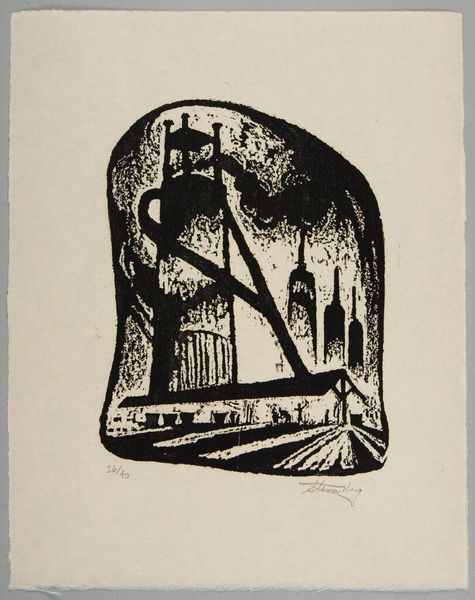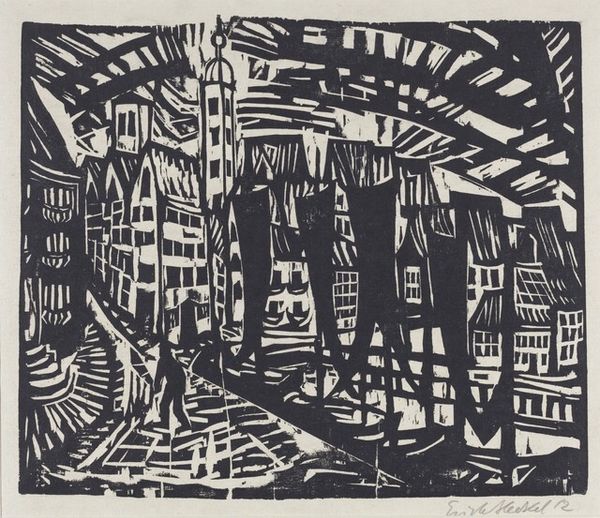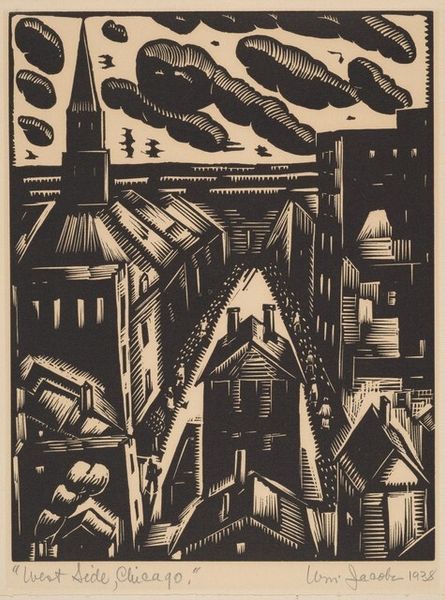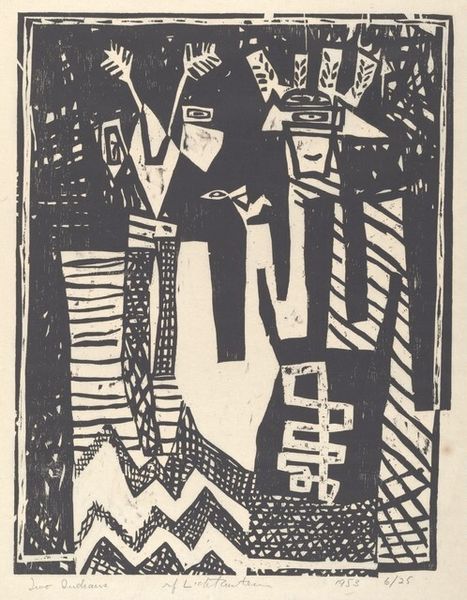
Dimensions: Image: 405 x 304 mm Sheet: 457 x 385 mm
Copyright: National Gallery of Art: CC0 1.0
Curator: This striking print is an "Untitled (Urban Scene-Evening)," dating from around 1935 to 1940, created by Irving G. Lehman. It's a woodcut, full of bold contrasts. Editor: Woah, that’s… heavy. Visually heavy, I mean. The black and white is so stark, like a city holding its breath. Makes me think of silent movies, you know? All shadows and sharp angles. Curator: Yes, the high contrast certainly lends a dramatic quality, placing it within the Expressionist and Modernist movements that explored the anxieties of urban life. Look how Lehman uses geometric forms to depict the industrial structures. There’s almost a brutalist sensibility at play. Editor: Brutalist! That’s it. All those rigid lines give it that feeling of imposing order. But look, there's this figure in the foreground... slumped, maybe asleep? Against all this machinery. It feels so vulnerable. Like a dream dissolving into the city’s relentless logic. Curator: Precisely. The juxtaposition is key. The sleeping figure disrupts the hard, angular forms of the cityscape. It can be interpreted as a critique of industrialization, highlighting its impact on the individual, potentially alluding to labor exploitation or social displacement. It also calls into question what modern life does to the physical form and perhaps to one's humanity. Editor: Absolutely, you know, art has always done a great job speaking about modern life in critical terms, it provides almost therapeutic value when the viewer knows the artist shares their struggles and concerns about modern, urban life. I dig how the steam from the factory stacks becomes swirling ornamentation. Like the city itself is exhaling. And it feels... almost romantic, you know? Like a gritty kind of romance, maybe a hopeless romance with the possibilities and realities of industrial progress. Curator: That romantic tension, that dialectic is very much present. Lehman doesn’t just present a bleak industrial landscape; there's a strange beauty in its starkness. I think the lack of a clear narrative—it being “Untitled,” remember—invites multiple interpretations, allowing us to project our own experiences and anxieties onto it. Editor: I guess even a sleeping figure can dream of progress... or its collapse. This has made me look at modern landscapes very differently, perhaps in terms of how power structures really materialize around urban populations. Thanks. Curator: It's through considering historical and social contexts like these that art history helps to facilitate conversations around modern anxieties in both an academic setting but even in popular consciousness. This one especially underscores that potential.
Comments
No comments
Be the first to comment and join the conversation on the ultimate creative platform.
